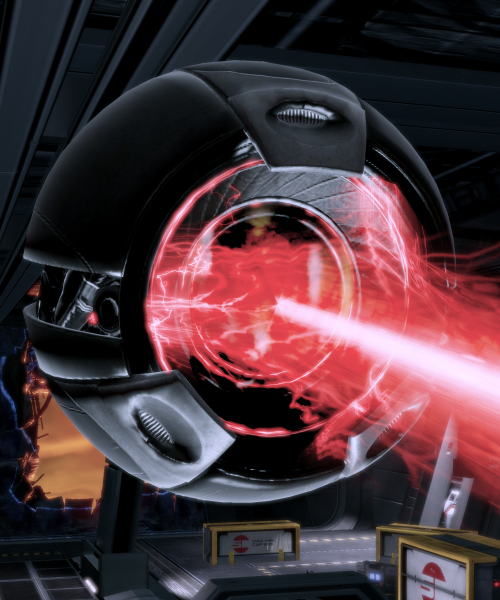We’re well used now to drones being used to attack terrorist targets in the Middle East. Call of Duty players will also be familiar with using drones to take out enemies. But drones so far are basically unmanned planes with missiles attached.
Elsewhere, quadcopter drones are also becoming very familiar for a variety of tasks, but so far at least, we’re not seeing them being used on the battlefield, or if they are being used, it is being kept out of the news. It can only be a matter of time though. They can already be made in a wide range of sizes from tiny insect-sized reconnaissance drones that carry cameras, microphones or other small sensors, right up to helicopter-sized drones for missile and gun mounting.
At each size, there are advantages and disadvantages. Collectively, drones will change warfare and terrorism dramatically over the next decades.
Although the big Predator drones with Hellfire missiles look very impressive and pack a mean punch, and are well proven in warfare, they soon won’t be as important as tiny drones. Imagine you have a big gun and a choice of being attacked by two enemies – a hungry grizzly bear, or a swarm of killer bees, and suppose these bees can penetrate your clothing. The bear is huge and has big sharp claws and teeth, but there is only one, and you’re a good shot and it will go down easily with your gun if you stay cool. The bees are small and you may swat a few but many will sting you. In practice, the sting could be a high voltage electric shock, a drop of nerve gas, a laser into your eye, or lethal germs, all of which are banned, but terrorists don’t care. Sharp carbon needles can penetrate a lot of armor. It is even possible to make tiny shaped-charge explosive stings.
Soon, they won’t even need to be as big as bees. Against many backgrounds, it can be almost impossible to see a midge, let alone kill it and a midge sized device can get through even a small gap. Soldiers don’t like having to fight in Noddy suits (NBC).
Further in the future, various types of nanotech devices might be added to attack your nervous system, take over your brain, paralyze you, switch your consciousness off.
Nature loves self-organisation, and biomimetics has adopted the idea well already. It is easy to use simple flocking algorithms to keep a swarm loosely together and pretty immune to high attrition. The algorithms only need simple sensors and processors, so can be very cheap. A few seekers can find and identify targets and the right areas of a target to attack. The rest can carry assorted payloads and coordinate their attacks, adding electric charges to make lethal shocks or arranging to ‘sting’ simultaneously or in timed sequences at certain points.
We heard this week about 3D printers allowing planes to make offshoots during flight. Well, insect-sized drones could too. Some could carry material, some could have the print heads and some provide the relative positioning systems for others to assemble whatever you want. Weapons could just seemingly appear from nowhere, assembled very close to the target.
So much for the short-term and mid-term future. What then?
 Mass Effect combat drone, picture credit: masseffect.wikia.com
Mass Effect combat drone, picture credit: masseffect.wikia.com
In futuristic computer games such as Halo and Mass Effect, combat orbs float around doing various military and assistant tasks. We will soon be able to make those too. We don’t have to use quadcopters or dragonfly drones. I had to design one for my sci-fi novel but I kept as close as possible to real feasible technology. Mine just floats around using electromagnetic/plasma effects. I discussed this in:
http://carbonweapons.com/2013/06/27/free-floating-combat-drones/ (the context there was for my sci-fi book, but the idea is still feasible)
I explained how such drones could self-organize, could be ultra-smart, and could reassemble if hit, becoming extremely resilient. They could carry significant weaponry too. A squadron of combat drones like these would be one hell of an enemy. You could shoot one for ages with laser or bullets and it would keep coming. Disruption of its fields by electrical weapons would make it collapse temporarily, but it would just get up and reassemble as soon as you stop firing. With its intelligence potentially local cloud based, you could make a small battalion of these that could only be properly killed by totally frazzling them all. They would be potentially lethal individually but almost irresistible as a team. Super-capacitors could be recharged frequently using companion drones to relay power from the rear line. A mist of spare components could make ready replacements for any that are destroyed. Self-orientation and use of free-space optics for comms make wiring and circuit boards redundant, and sub-millimetre chips 100m away would be quite hard to hit.
My generation grew up with the nuclear arms race. Millennials will grow up with the drone arms race. And that if anything is a lot scarier. The battle drones in computer games are fairly easy to kill. Real ones soon won’t be.
Well I’m scared. If you’re not, I didn’t explain it properly.






